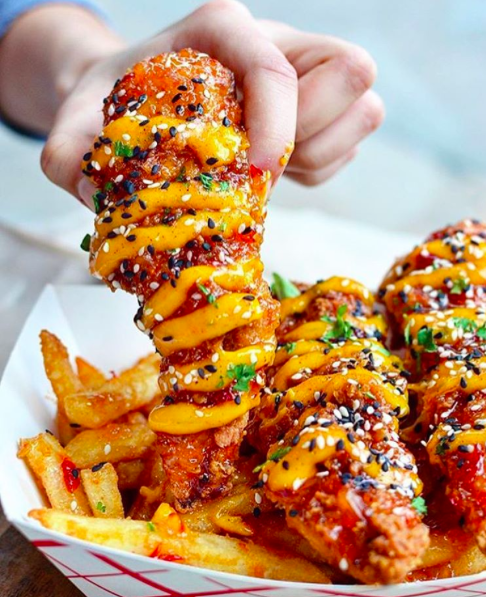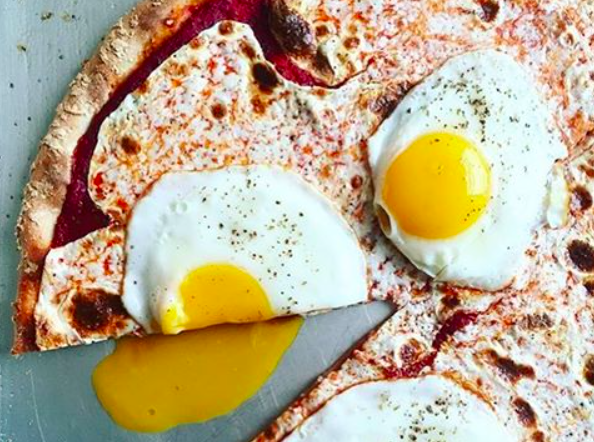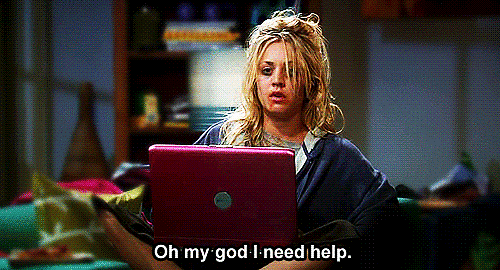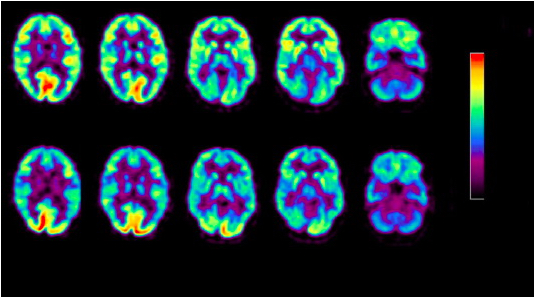As die-hard foodies, I’m sure many of us are familiar with the phenomenon I like to call the “Downward Food Porn Spiral.” It goes like this: curled up in your bed at 2 am, right before bed, you log onto Instagram (stupid, yes, and we still continue to do it). Dinner was a long time ago and you’re at that painful point where you’re getting hungry again, but it’s sorta too late to be eating a greasy burger. You scroll through your feed, when you see this photo on #Spoonfeed:

Photo courtesy of @biteofthebest on Instagram
Your eyes widen at its ethereal beauty. The gentle ooze of the sauce, the crispiness of the chicken – your heart starts to beat a little faster. You continue to scroll.
Oh. Oh, yes. You gulp back your desire as your mouth begins to water. Your breathing intensifies. You really should go to sleep, but what’s the harm in looking at one more picture?

Photo courtesy of @laurenzaser on Instagram
At this point, your stomach is basically imploding, and you may even have broken out in a sweat. Your body has this empty feeling, like every inch of your body is screaming for food. You’re in agony, but it’s a good kind of agony. Each new picture creates a hunger within you that can only be satisfied by another delectable image. And the downward spiral continues.

Gif courtesy of popsugar.com
So the question we all ask ourselves, trapped in the dark, dark void of food porn, is why does it hurt so good?
Science is already on it; apparently, you should blame your brain, not your stomach. According to a 2015 review in the journal Brain and Cognition, in response to images of appetizing food, your brain goes into overdrive and causes you to have the #foodpornfeels. These are actual scans of what your brain looks like when you see photos of a mac ‘n cheese pizza or refreshing açaí bowls:

Courtesy of www.sciencedirect.com
Unless you’re a neuroscience major, the scans are probably just a bunch of meaningless blobs. However, researchers were able to determine that key areas of the brain involved with visual and reward processing, emotion, learning, and decision-making are activated upon viewing images of desirable food.
There is a spike in the hormone ghrelin, which causes you to feel hungry and prepares your body to eat. Overall brain metabolism can increase by up to a staggering 24 percent as it consumes more energy to sustain these functions. Amazingly, all of these changes begin in just over a tenth of a second.
You may not realize it as you lie on your butt, lazily perusing social media, but your brain’s response to seeing images of food has primal roots and probably played a crucial role in the survival of our species. The human brain emerged when food was much scarcer than it is now.
Over time, it evolved to enjoy looking at food because, logically, eating would follow soon after. Our natural urge to look at food – caused by the activation of reward and pleasure centers in the brain – could’ve been an adaption that helped us to locate energy-filled food with more accuracy and quickly distinguish edible from non-edible substances.
During experiments, even in the present-day, people are able to correctly determine which of two images contains the higher-calorie, higher-energy dish when they flash on a screen for only fractions of a second.

Gif courtesy of giphy.com
Nowadays, scrolling the #spoonfeed is a fun (yet, emotionally taxing) way to pass the time. But for our primate ancestors, food porn = survival. That can be your new excuse the next time you’re obsessing over pics on Instagram when you should be sleeping.


